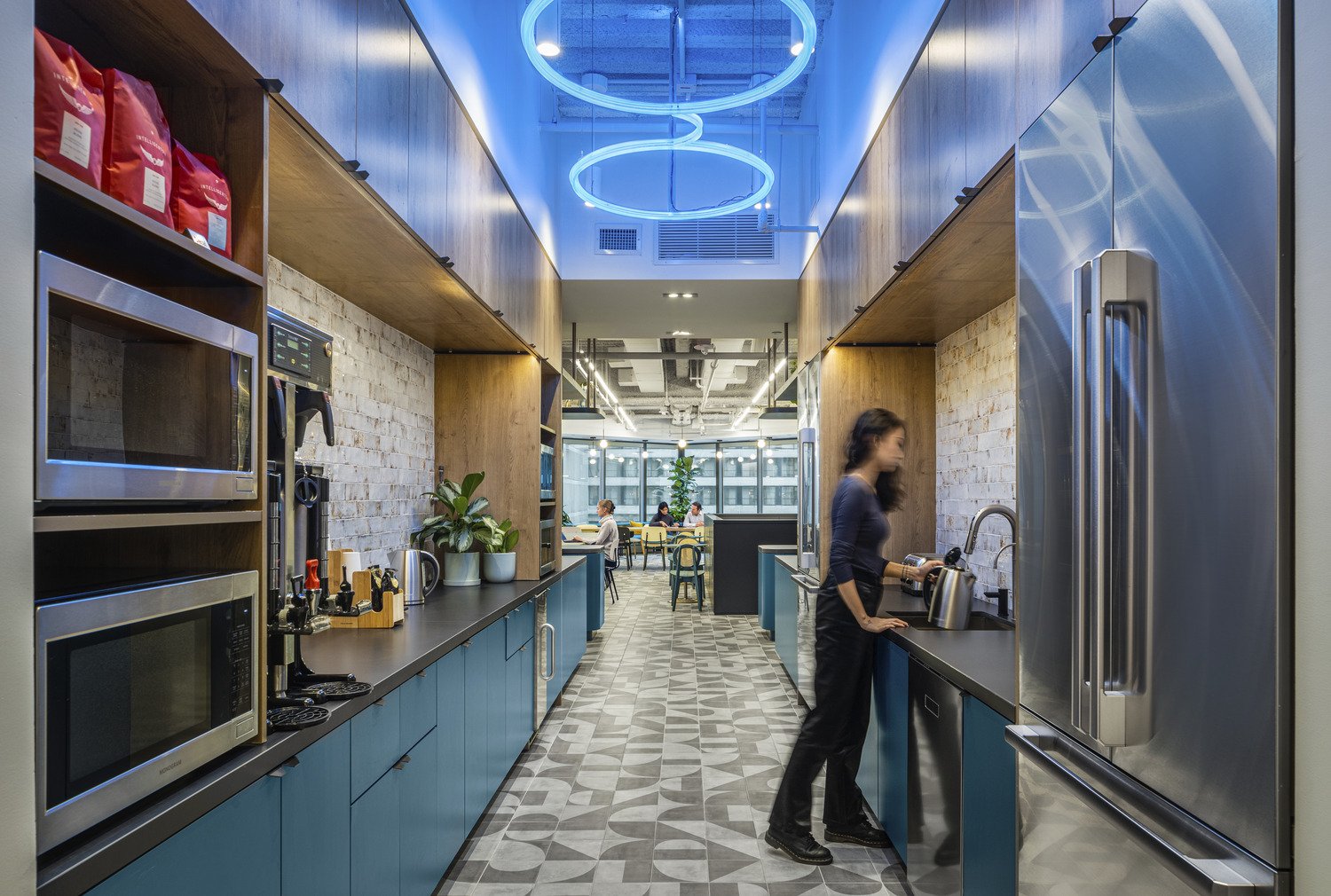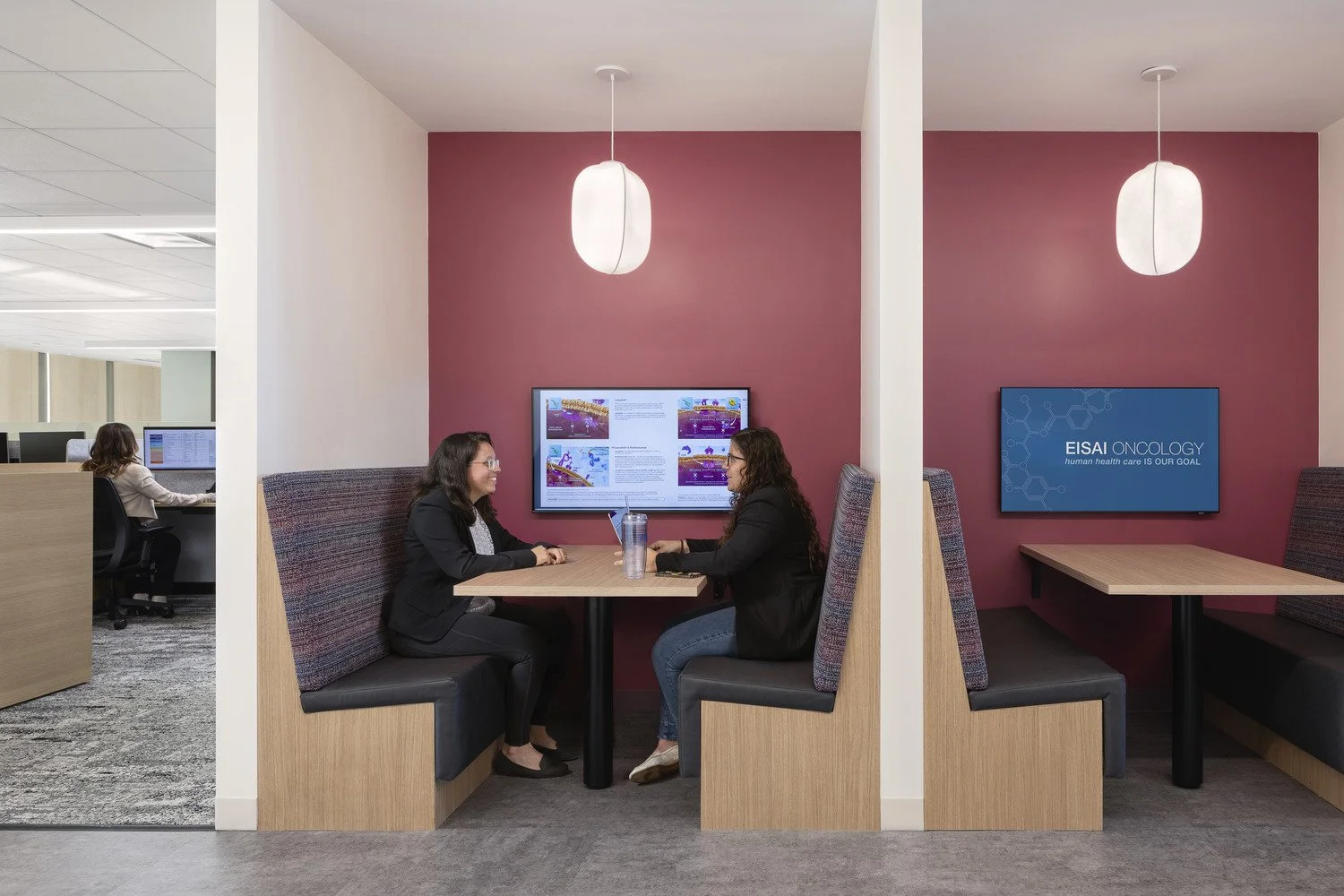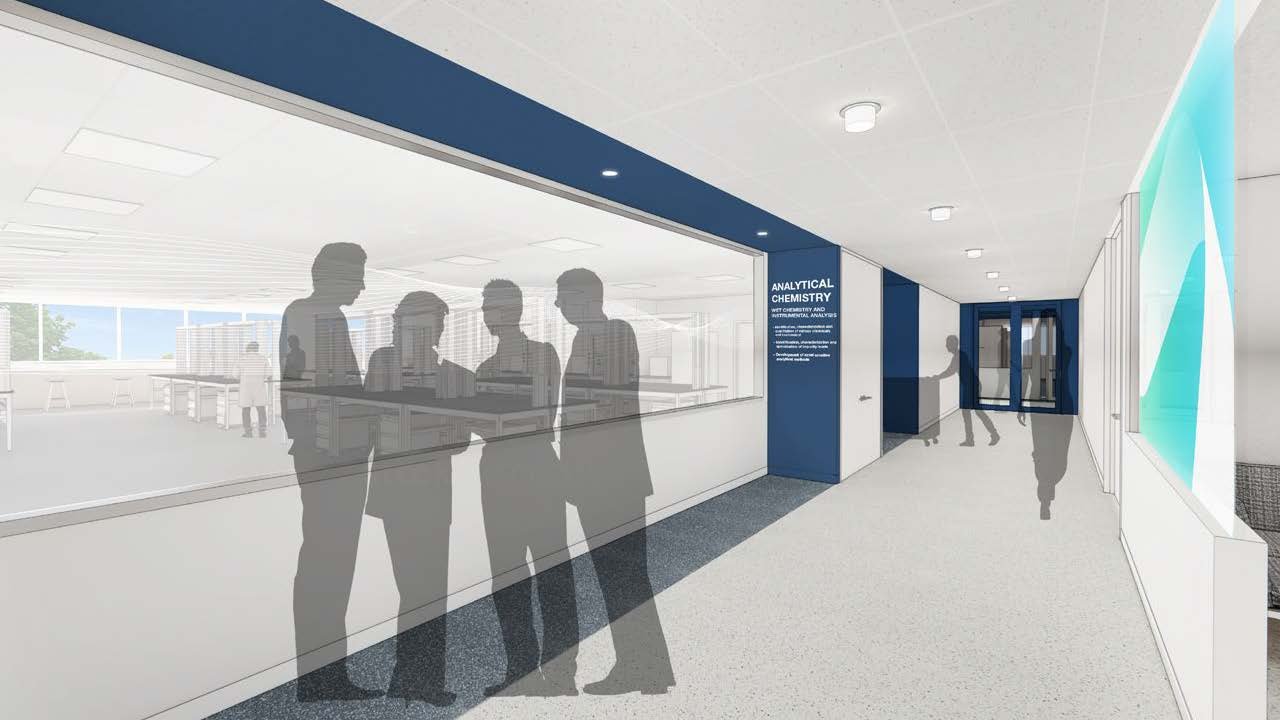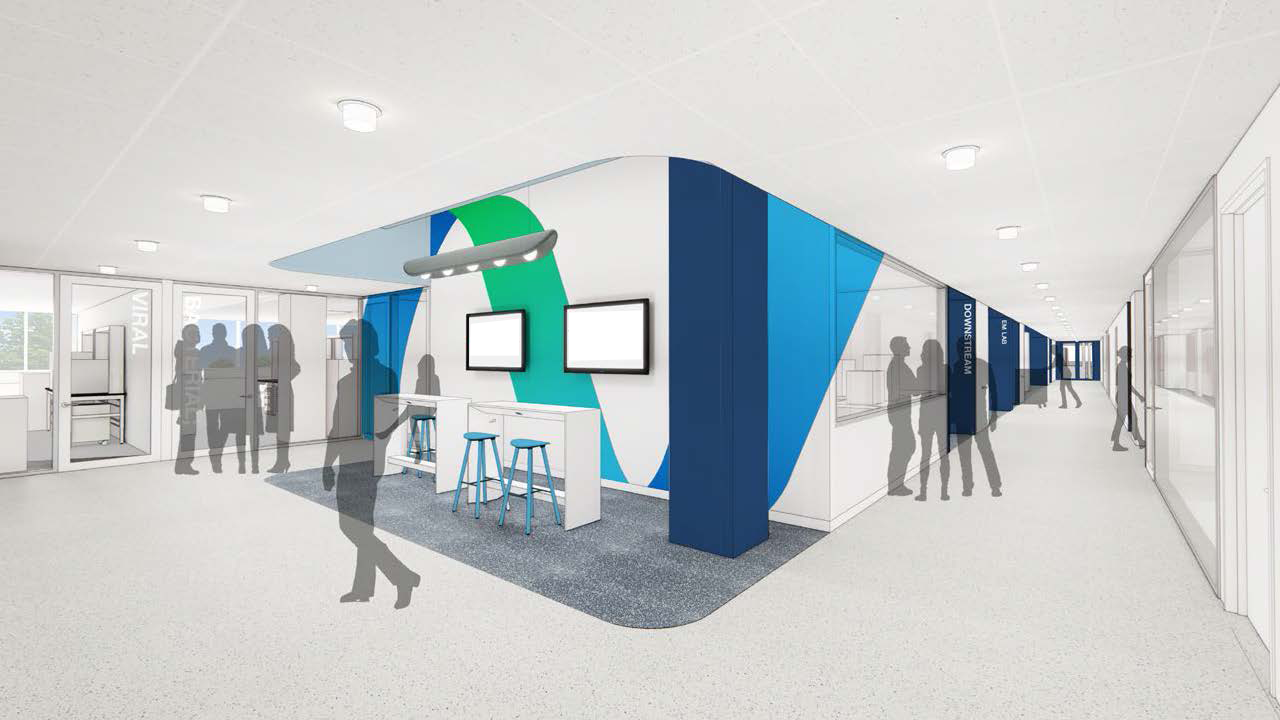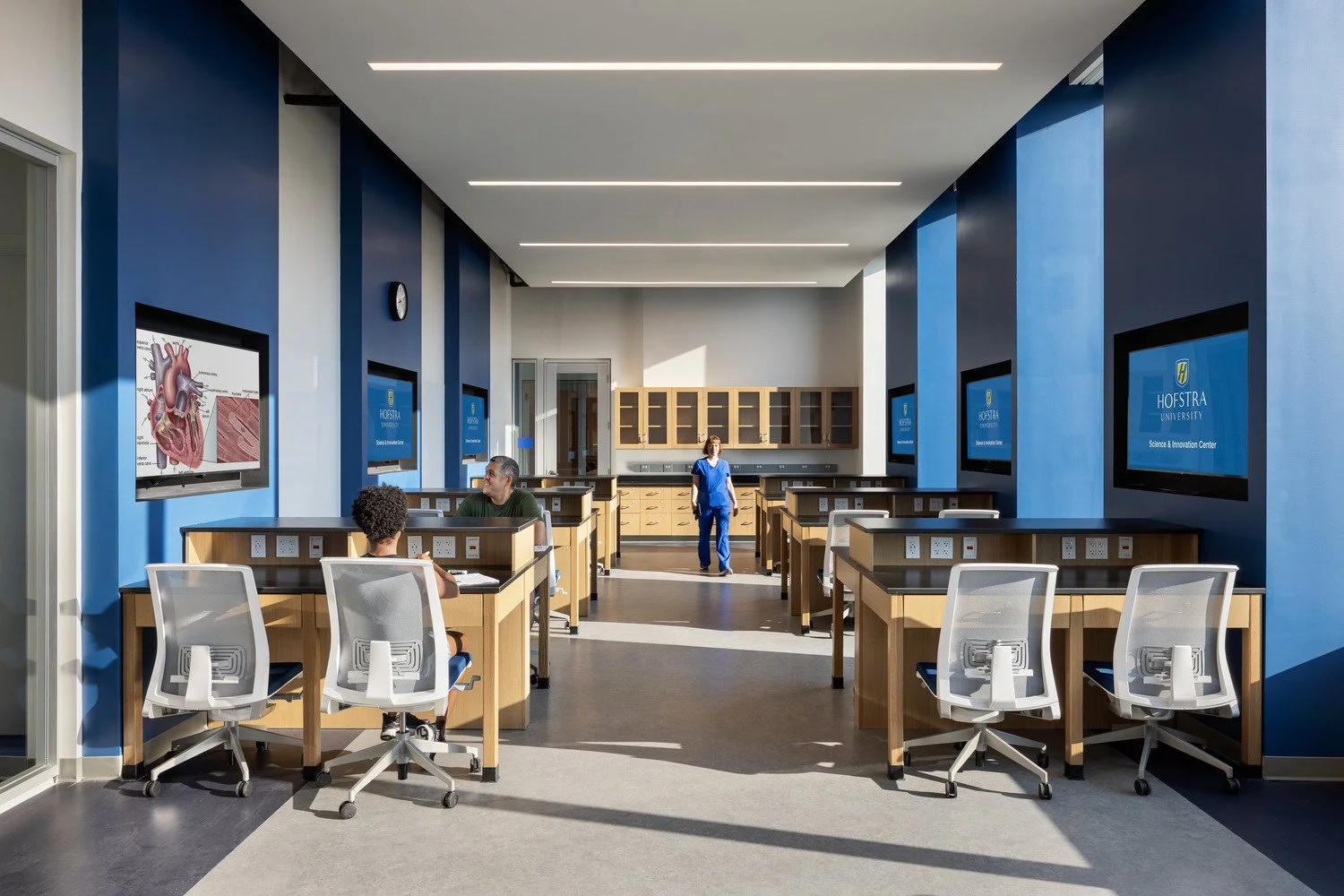Future Labscapes: Bridging Innovation and Worker Wellbeing for a New Era of Life Science
The COVID-19 pandemic has revolutionised the Life Science sector and brought its research and labs into global focus. Across the US there is an increase in companies moving from global to national headquarters, offices being repositioned into lab spaces, and lab workers themselves are even edging into centre focus for big pharma. The inventory of US life sciences facilities jumped 50% in the last 5 years and is still growing. Rapid changes in the US market are setting the tone for the industry as a whole, and driving innovation across the globe.
So what patterns are emerging from the Life Science sector among the white noise? And what changes can be applied to other markets? The Ark Research Lab talked to HLW’s Life Science sector leads to uncover the forces driving innovation in lab spaces.
December 14, 2023
From Clinical to Communal
“Pre-COVID, lab design was often stainless steel, clinical surroundings, and function over atmosphere. Now, our clients are focusing on wellbeing and culture to both win the war for science and lab worker talent and speak to the mission at the heart of their companies.”
-Robert Thomas, Principal at HLW and Life Science Sector Lead
Life Science companies are placing research innovation in center focus, and using community and collaboration as it’s vehicle, providing amenities and work settings that allow for synergies, exchange, and cross-functional thinking. Shared space types catering to agile, scrum meetings and knowledge exchange are being placed within work areas and just outside lab spaces.
Community is also being used as a leverage for attracting and retaining top talent, with life science firms increasingly incorporating high-quality amenities, such as work cafés, IT tech bars and wellness studios into their workspaces. While those offerings are nothing new to corporate industries such as Finance, Tech, and Law, it’s a seismic shift for the previously bare bones approach of lab spaces.
“Science has always been about innovation at its core and giving people the space to think and dream rather than simply perform the required functions. We want our space to connect back to that higher meaning that is our company ethos and give our people the space to dream.”
-Life Sciences Corporate Director – New Jersey – Visioning Session
This confidential life science client implemented cozy, cafe inspired interior for their corporate and lab workforce, with abundant use of natural materials and recreational space to relax.
From Separated to Synergized
“We believe the integration of our lab and traditional office space helps connect the science to the mission. It’s about putting the science on display, not necessarily the scientist. Separation between certain functions will still need to be maintained but a portion of everyone’s day should happen within that central hub.”
- Melissa Strickland – Managing Director HLW New Jersey / Life Science Workplace Sector Lead
The lines between offices and labs, employees and lab workers are becoming more and more blurred, as technological and AI advances are making scientific research less manual and more digitised, and leadership prioritise synergies between staff and lab workers to accommodate the research workflow under one roof.
“Labs used to be no daylight, shift work, separated off from the corporate environment. We’re now seeing a reckoning of the lab environment, with labs being brought to the exterior and shown off as not just primary workspace, but the heart of the company.”
-Chris Townsend – Associate Principal – Senior Project Manager Life Science Sector
We are currently collaborating with a confidential life science company to integrate lab spaces and workers into the heart of the office through design solutions and placing within the floorplate, allowing external visitors and clients to see glimpses of the research work and innovation when touring the building.
A curated circulation path leads visitors past active lab spaces. Thoughtful viewing angles help maintain privacy for lab employees while showcases elements of their work.
From Isolated to Interactive
“Our people have a real desire for enclosed office space, for focus space, and readily available agile collaboration areas. Functionality and focus on getting the job done quickly in between working in the lab area is key.”
-Client Interview – Global Pharmaceutical Company (PTC)
With new technologies like AI and machine learning speeding up previously manual elements, the nature of science work is in flux. What used to require large expanses of lab space can now be done with smaller equipment, in faster iterations, and result in larger datasets. The analysis of this data requires new kinds of settings for focus work and detailed study. Life Science companies are reacting by incorporating flexible, enclosed rooms for focus work, prioritising efficiency, availability, and acoustic and visual comfort.
This shift in workstyle doesn’t finish at production. Showcasing the work, connecting it to other teams and building a strong web of communication is more critical than ever. Unlike corporate industries, this isn’t achieved through informal breakout spaces and lounges dotted between desks.
Life science firms are implementing targeted collaboration spaces, equipped with whiteboards, writeable surfaces, and high-top tables for quick scrum-style interactions. These settings are located right outside the lab zones to increase both frequency and ease of use and speed up time spent looking for the right work setting outside the lab.
A variety of workspaces from collaborative to focused allow for quick iteration outside of the lab.
Gazing into the crystal-ball: what does the future hold for the Life Science sector and its workers?
Life sciences has been growing a rapid pace, even outpacing tech. As the field begins to settle into new patters of production and automation, we’re going to see increased opportunities to tie in learnings from other industries. Hospitality elements focused on employee experience will help create those settings that allow employees to dream and think big, collaborative settings from the tech sector can aid communication across teams and departments, and branded moments from the product design sector are paving the way for enhanced brand connection.
We believe the future of life sciences will combine the best of all these elements to transform spaces to empower and inspire a passionate workforce.


